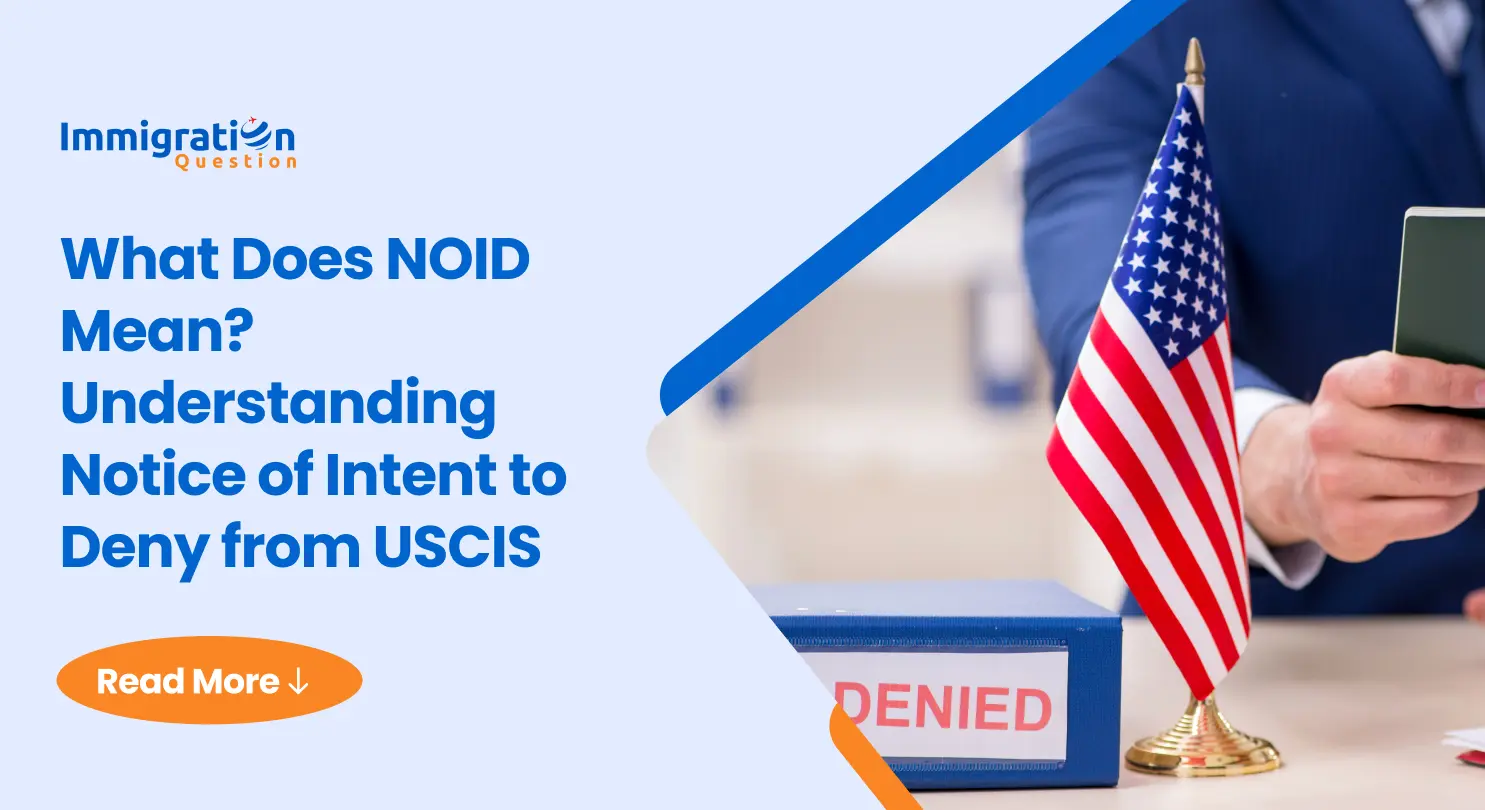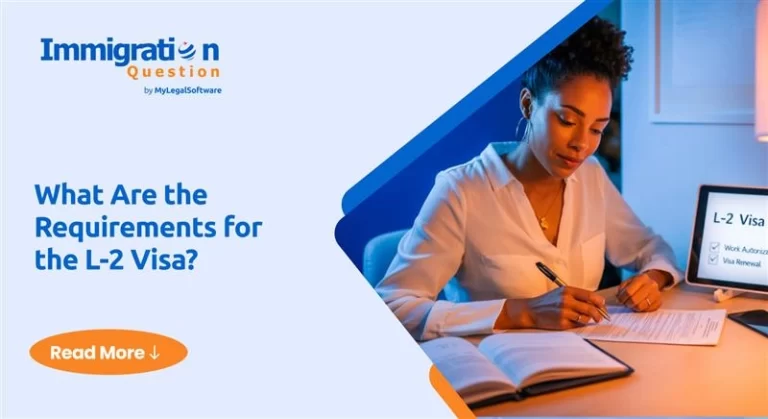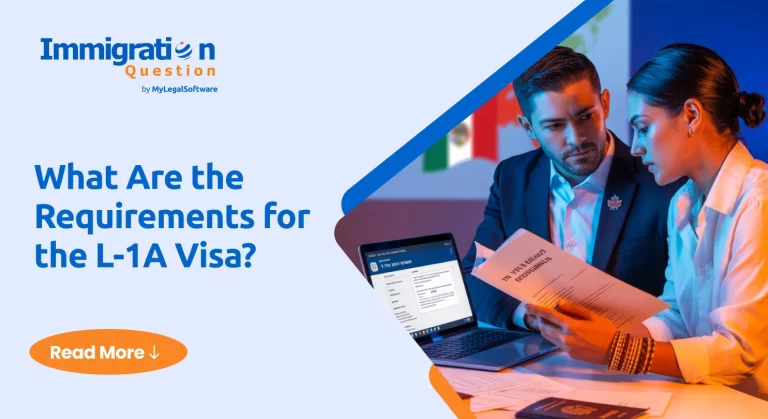Receiving a NOID, or Notice of Intent to Deny, from U.S. Citizenship and Immigration Services (USCIS) can be alarming. However, it’s crucial to understand that a NOID is not an outright denial but a formal warning indicating that USCIS intends to deny your application unless you can provide additional evidence or clarification.
This notice offers a final opportunity to address any deficiencies in your application. Understanding the implications of a NOID is vital for any immigration applicant. It signifies that while your application has issues, you still have a chance to rectify them.
What is a NOID (Notice of Intent to Deny)?
A Notice of Intent to Deny (NOID) is a formal communication from USCIS indicating that, based on the current evidence, your application does not meet the necessary requirements for approval.
However, before making a final decision, USCIS provides you with an opportunity to address the concerns raised. This is distinct from an outright denial, where no such opportunity is given.
The primary purpose of a NOID is to ensure fairness in the adjudication process. By issuing a NOID, USCIS allows applicants to present additional evidence or explanations that might support their eligibility. This step is especially crucial in complex cases where initial submissions may lack comprehensive documentation.
Feeling lost in immigration paperwork? Immigration Question connects you with attorneys who have handled cases just like yours. Browse our network of immigration specialists and get the professional guidance you deserve.
Common Reasons USCIS Issues a NOID
Understanding why USCIS issues a NOID can help you prepare a more effective response. Common reasons include:
- Insufficient Evidence or Documentation: Failure to provide adequate supporting documents to establish eligibility.
- Eligibility Concerns: Discrepancies or doubts about meeting specific visa or immigration benefit criteria.
- Inconsistencies in Application Materials: Conflicting information within the application or between the application and supporting documents.
- Fraud or Misrepresentation Concerns: Suspicions that the applicant has provided false information or fraudulent documents.
- Prior Immigration Violations: History of overstays, unauthorized employment, or other violations that raise concerns about the applicant’s compliance.
- Doubts About the Authenticity of Relationships: In family-based petitions, USCIS may question the genuineness of the claimed relationship.
- Employer Issues in H-1B or Employment-Based Petitions: Concerns about the legitimacy of the job offer, employer’s ability to pay, or the nature of the job role.
What Happens After Receiving a NOID?
Once you receive a NOID, the clock starts ticking. So, you must act promptly.
- Response Deadline: USCIS gives you 30 days from the date on the notice (not from when you receive it) to respond. This deadline is strict, and failure to respond within this timeframe can result in the denial of your application.
- Potential Outcomes After Responding:
Approval: If your response adequately addresses USCIS’s concerns, your application may be approved.
Denial: If the response is insufficient or fails to resolve the issues, USCIS may deny the application.
- Consequences of Not Responding or Responding Poorly: Neglecting to respond or submitting an inadequate response will likely lead to the denial of your application.
How to Respond to a NOID Effectively
Responding to a NOID requires careful planning and execution. Here’s how to create an effective response:
- Review the Notice of Intent to Deny thoroughly: The NOID will specify exactly why USCIS intends to deny your application. Identify each concern raised and make sure you understand what evidence or explanation USCIS is seeking.
- Consult with an immigration attorney: Because a NOID indicates serious issues with your application, professional guidance is highly recommended. An experienced immigration attorney can help interpret the NOID, identify appropriate evidence, and craft compelling legal arguments.
- Gather strong supporting evidence: Collect additional documentation that directly addresses each concern in the NOID. This might include affidavits, expert opinions, additional records, or clarifying statements.
- Draft a comprehensive response letter: Your response should include a detailed cover letter that addresses each point raised in the NOID, referencing the specific evidence you’re submitting to overcome each concern.
- Organize your response package professionally: Present your response in a clear, organized manner with a table of contents, tabbed sections for different issues, and clear labeling of all documents.
Remember that your NOID response must address every issue raised. Overlooking even one concern could result in denial, even if you perfectly address all other issues.
What Happens After You Respond to a NOID?
After submitting your response to a notice of intent to deny, USCIS will review your additional evidence and arguments. This review typically takes several weeks to a few months, depending on the complexity of your case and current USCIS processing times.
There are three possible outcomes:
- Approval: If your response satisfactorily addresses all concerns, USCIS will approve your application.
- Denial: If your response fails to overcome the issues identified in the NOID, USCIS will issue a denial notice explaining their reasoning.
- Request for Additional Evidence (RFE): Occasionally, USCIS may ask for more specific documentation if your response is promising but still incomplete.
If your case is denied despite your response, you may have options to appeal or file a motion to reopen or reconsider, depending on the specific immigration benefit sought.
How to Avoid Getting a NOID
The best way to handle a NOID is to avoid receiving one in the first place. Consider these preventative strategies:
- Submit comprehensive initial applications: Include all required documents and anticipate what additional evidence might strengthen your case.
- Address potential weaknesses proactively: If you know there are aspects of your case that might raise questions, address them upfront with explanations and evidence.
- Maintain consistency across all immigration filings: Ensure that information in your current application aligns with previous submissions to USCIS or other government agencies.
- Follow USCIS instructions precisely: Pay close attention to form instructions, filing requirements, and documentation guidelines.
- Consider professional assistance: Working with an experienced immigration attorney from the beginning can help identify potential issues before they become problems.
Final Thoughts
A Notice of Intent to Deny (NOID) is a critical moment in your immigration journey. While it indicates serious concerns about your application, it also provides a final opportunity to address and rectify these issues. Responding promptly and effectively is paramount.
While representing yourself is possible, the complexity and high stakes of NOID responses often make professional legal assistance invaluable. At Immigration Question, you’ll get answers to your questions and find experienced attorneys who are ready to guide you through this process, ensuring that your response is thorough and persuasive.
Frequently Asked Questions
-
Is a NOID the same as a denial?
No, a NOID indicates USCIS’s intention to deny your application but gives you an opportunity to respond before a final decision is made.
-
How much time do I have to respond to a NOID?
Typically, 30 – 33 days from the date on the notice, not from when you receive it. The exact deadline will be specified in your NOID.
-
What are my options if my case is denied after responding to a NOID?
Depending on the specific benefit sought, you may be able to file an appeal, a motion to reopen, or a motion to reconsider. In some cases, you may have to start a new application.
-
How long does it take USCIS to make a decision after a NOID response?
Processing times vary but typically range from a few weeks to months, depending on case complexity and current USCIS workloads.
-
Can I submit new evidence with my NOID response?
Yes, you can and should submit new evidence that directly addresses the concerns raised in the NOID.



![Top 5 Immigration Questions People Asked Online This Week [May 30, 2025]](https://blog.immigrationquestion.com/wp-content/uploads/2025/05/top-5-immigration-questions-people-asked-online-this-week-may-30-2025-768x419.webp)





